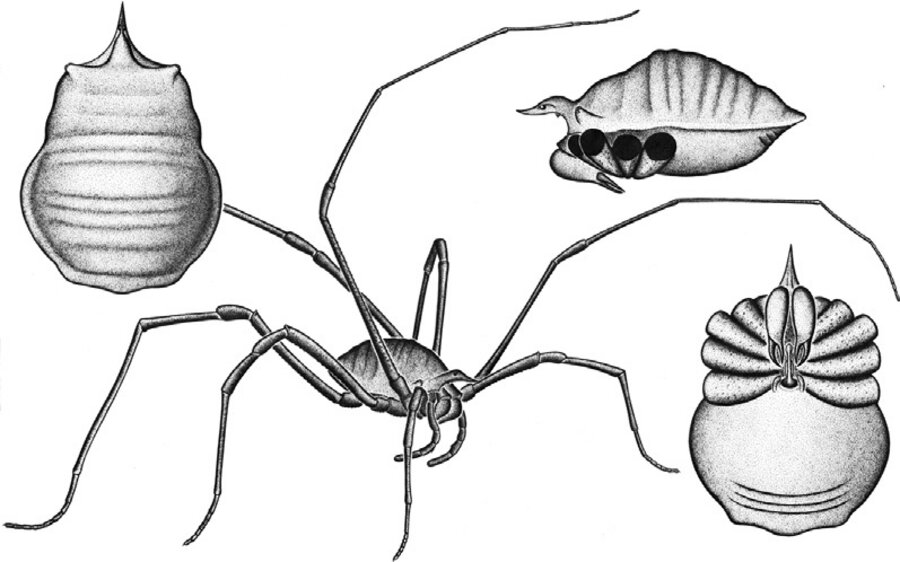Ancient four-eyed wonder resolves daddy longleg mystery
Loading...
How did the elegant daddy longleg, with its ethereal tip-toeing movements, maintain its cool individuality amid the otherwise scurrying and bristly world of spiders? As it happens, daddy longlegs are not spiders at all, but members of a separate arachnid group with the quaint name of harvestmen – or Opiliones, which is Latin for "shepherds."
This week, researchers at the University of Manchester and the American Museum of Natural History announced their discovery of a 305-million-year-old harvestman fossil – a previously unknown species that was endowed, surprisingly, with four eyes.
The thread-legged fossil was excavated over 30 years ago at the Montceau-les-Mines Lagerstätte site in Eastern France, but scientists were hard-pressed to analyze it until Russell Garwood, the University of Manchester paleontologist who led the study, found a way to analyze such tiny fossils using x-ray computed tomography, commonly known as CT scans.
Land-based invertebrates (including insects) are rarely preserved well enough to be identified as fossils because "the environments in which they live favor rapid decay over burial," according to the new study published in Current Biology, "and many... possess a poorly mineralized exoskeleton."
But this particular harvestman made it onto the fossil record by dying amid sediments where a mineral called siderite was able to grow around its remains, forming a protective concretion before the sediments were compacted into rock. "The fossil then rotted away, leaving a three-dimensional void," Dr. Garwood explained in an email to the Monitor.
This void took the shape of a creature with two pairs of eyes – one perched atop an "ocularium" structure in the middle of its forehead, and another mounted atop two stink glands on the animal's sides.
Analyzing its whole body within a matrix of 158 morphological traits, the animal was found to be related to another extinct four-eyed harvestman, Eophalangium sheari, which had previously been slotted into another group. Together, H. argus and E. sheari form the new sub-order Tetrophthalmi.
Garwood and his colleagues' new finding helps explain how arachnids' eyes developed, and changes paleontologists' understanding of when side-eyed and muppet-eyed harvestmen marched apart, taxonomically.
"Successfully placing fossils in phylogenies [evolutionary histories] is integral to understanding the tree of life," wrote the authors. And these particular fossils "are indicative of ancient origins and one of the earliest arthropod terrestrialization events."
Ganwood says the finding also illustrates how different fields of research can join forces to reveal biological mysteries. "By combining evolutionary developmental biology, fossils, and evolutionary biology we can explain otherwise enigmatic features in living groups."
H. argus is named for the Greek monster Argos, who had 100 eyes and served the goddess Hera. To commemorate him, according to Ovid's Metamorphoses, Hera forever preserved his eyes by transplanting them onto the tails of peacocks.






